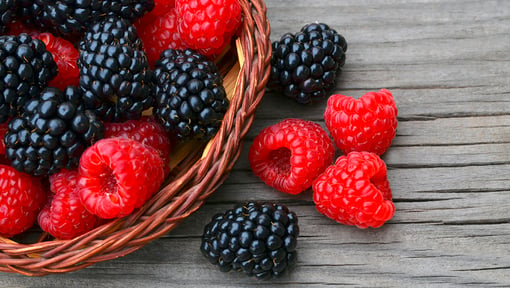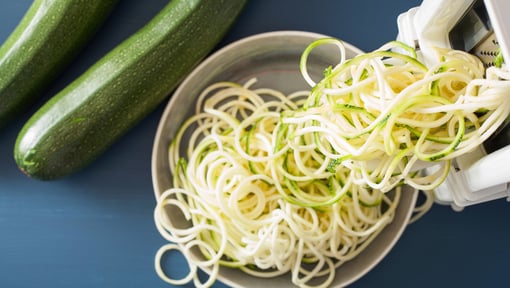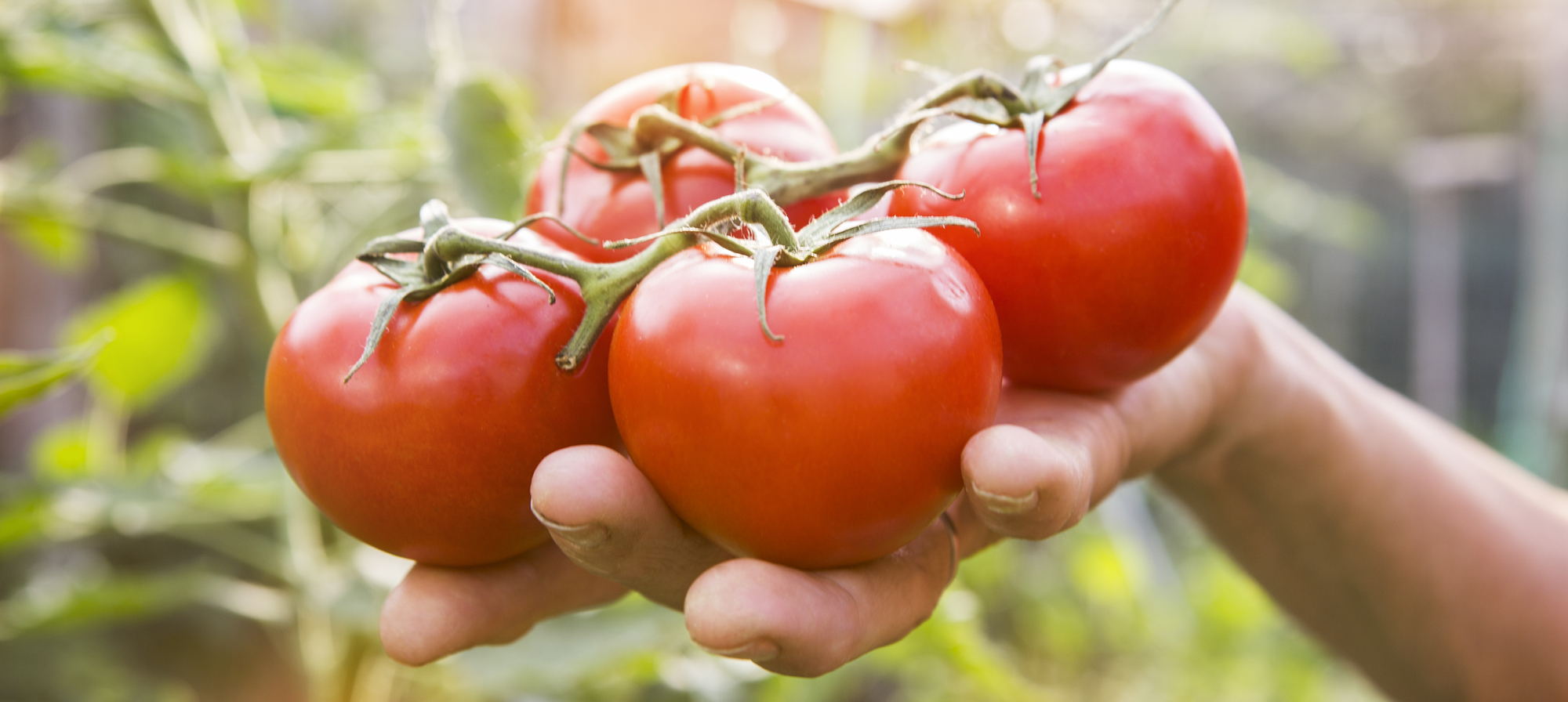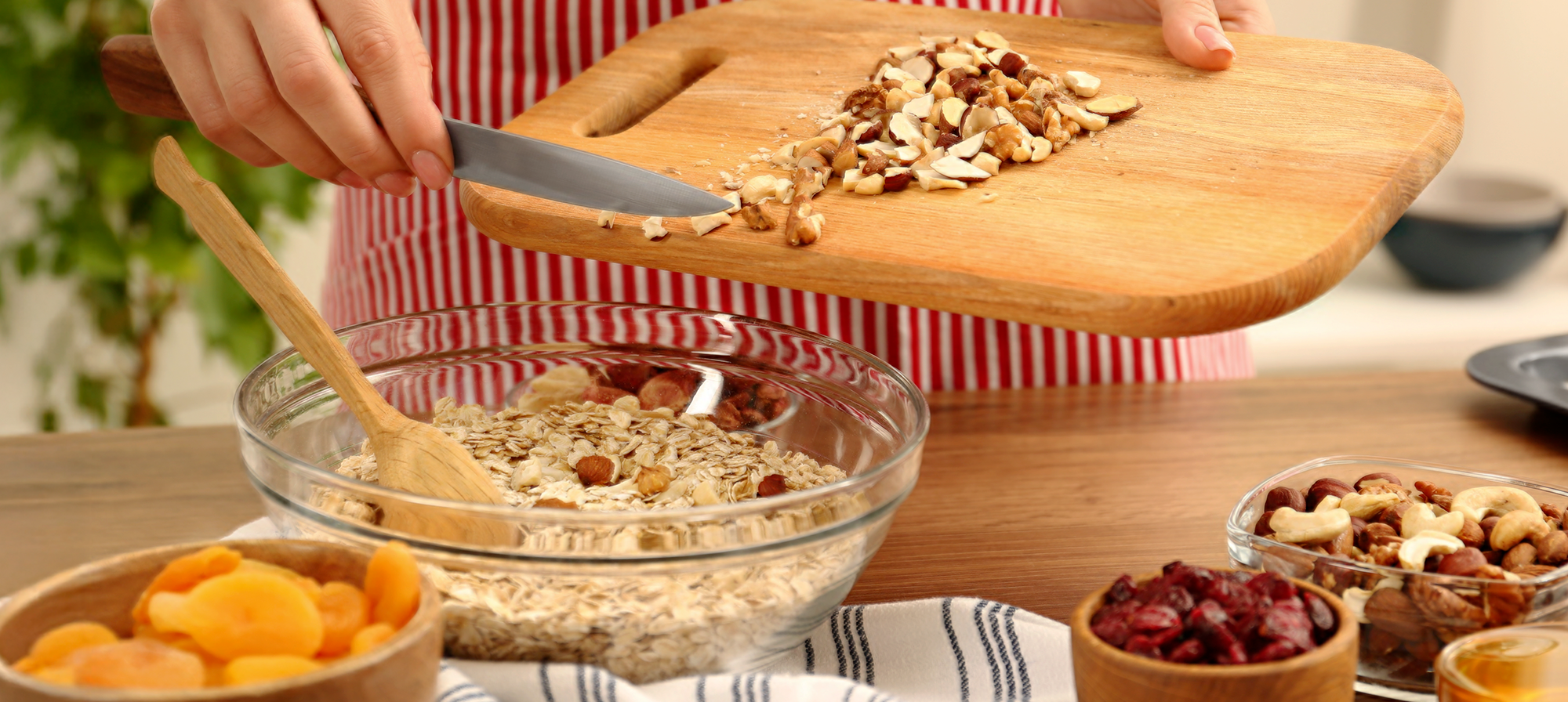A calorie’s a calorie, right? …Not quite.
Your body is more likely to run well if you put nutritious food into it. The kinds of foods that you eat are even more important as you age. That’s because you may need fewer calories as you get older, but your body still needs the same amount of nutrients. And in some cases, even more.
Most of the time, the most nutritious foods are whole and unprocessed. These foods are full of vitamins, minerals, and plant nutrients. They also have fiber and healthy protein, with fewer sugars and additives and preservatives.
These healthy foods are nutrient dense. This means they have a lot of nutrients but not a lot of calories.
 Foods high in nutrient density
Foods high in nutrient density
Each food you eat can be ranked from low to high in terms of nutrient density. Some foods, like doughnuts, have little nutrition. They are low in nutrient density. Other foods, like raspberries, are packed with nutrients, such as vitamins, minerals, and fiber. They are high in nutrient density. Here are some nutrient-dense foods:
- Whole fresh fruits and veggies
- Unprocessed meats, fish, poultry
- Whole grains
- Nuts and seeds
- Lightly processed dairy products, like milk, yogurt, and cheese
- Legumes, which include dried beans, peas, and lentils
 The benefits of nutrient-dense foods
The benefits of nutrient-dense foods
You can see that by filling up on nutrient-dense foods, you get the best nutrition for the calories. And there’s more good news. Foods high in nutrient density can help curb hunger and boost energy. They promote good digestion. They can help you manage your weight without leaving you feeling hungry because they make you feel fuller for a longer time. And some studies show that nutrient-dense foods can help support the health of your bones and lower your risk of some long-term health issues.
 How to fit more nutrient-dense foods into your food plan
How to fit more nutrient-dense foods into your food plan
Eating more nutrient-dense foods doesn’t have to be a chore. You can start by adding a few foods high in nutrient density to your day. You could try:
- Putting spinach on your sandwich at lunch
- Adding blueberries to your morning cereal
- Snacking on an apple or some walnuts between meals
- Choosing a salad with vinaigrette dressing as a side dish instead of French fries
- Adding chopped carrots, zucchini, or peppers to your pasta sauce
The pluses of eating more nutrient-dense foods are many. As you choose these foods more often, you may feel better and have more energy. You may find new foods that you enjoy adding to your food plan. And best of all, you will know you are giving your body the nutrients it needs to keep you at your healthy best.
Not a Silver&Fit® member? Learn more about everything the program has to offer, including more helpful healthy living tips like this, here on our website.
This information is not intended to take the place of regular medical care or advice. Please check with your doctor before using this information or beginning any self-care program. Images used for this article do not depict any members of the Silver&Fit program.
References
Di Noia, J. (2014). Defining powerhouse fruits and vegetables: A nutrient density approach. Preventing Chronic Disease, 11, E95. doi: 10.5888/pcd11.130390
Drewnowski, A., & Fulgoni, V. L., 3rd. (2014). Nutrient density: principles and evaluation tools. American Journal of Clinical Nutrition, 99(5 Suppl), 1223S-1228S. doi: 10.3945/ajcn.113.073395
Mayo Clinic. (2020). Weight loss: Feel full on fewer calories. http://www.mayoclinic.org/healthy-living/weight-loss/in-depth/weight-loss/art-20044318
United States Department of Agriculture, Agricultural Research Service. (n.d.). National nutrient database for standard reference release 27. https://fdc.nal.usda.gov/
United States Department of Health and Human Services & United States Department of Agriculture. (2020). Dietary guidelines for Americans 2020-2025. https://www.dietaryguidelines.gov/
Vernarelli, J. A., Mitchell, D. C., Rolls, B. J., & Hartman, T. J. (2015). Dietary energy density is associated with obesity and other biomarkers of chronic disease in US adults. European Journal of Nutrition, 54(1), 59-65. doi: 10.1007/s00394-014-0685-0
This article was written by Nora Byrne, edited by Sharon Odegaard, and clinically reviewed
by Elizabeth Thompson, MPH, RDN, on November 4, 2024.





